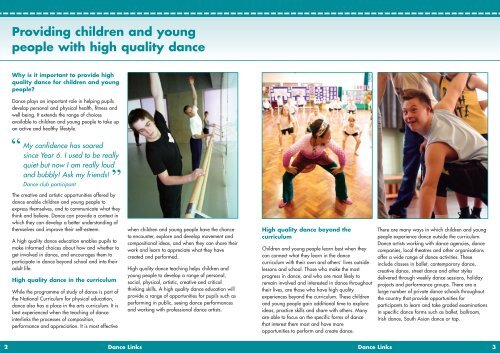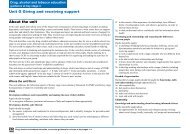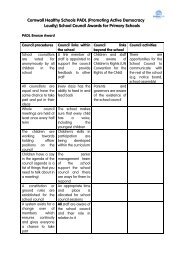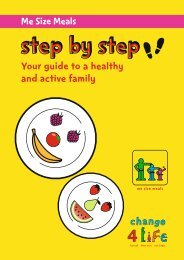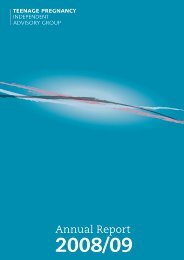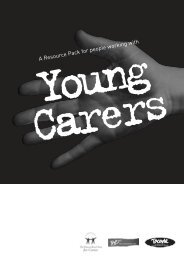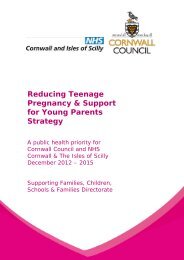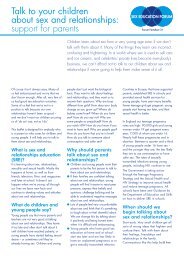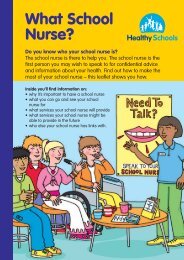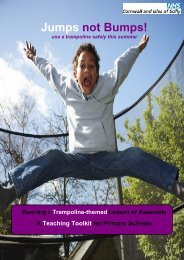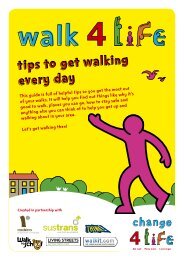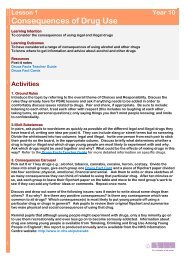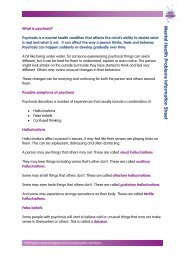DCMS Dance Links Brochure - Cornwall Healthy Schools
DCMS Dance Links Brochure - Cornwall Healthy Schools
DCMS Dance Links Brochure - Cornwall Healthy Schools
Create successful ePaper yourself
Turn your PDF publications into a flip-book with our unique Google optimized e-Paper software.
Providing children and youngpeople with high quality danceWhy is it important to provide highquality dance for children and youngpeople?<strong>Dance</strong> plays an important role in helping pupilsdevelop personal and physical health, fitness andwell-being. It extends the range of choicesavailable to children and young people to take upan active and healthy lifestyle.“My confidence has soaredsince Year 6. I used to be reallyquiet but now I am really loudand bubbly! Ask my friends!<strong>Dance</strong> club participant”The creative and artistic opportunities offered bydance enable children and young people toexpress themselves, and to communicate what theythink and believe. <strong>Dance</strong> can provide a context inwhich they can develop a better understanding ofthemselves and improve their self-esteem.A high quality dance education enables pupils tomake informed choices about how and whether toget involved in dance, and encourages them toparticipate in dance beyond school and into theiradult life.High quality dance in the curriculumWhile the programme of study of dance is part ofthe National Curriculum for physical education,dance also has a place in the arts curriculum. It isbest experienced when the teaching of danceinterlinks the processes of composition,performance and appreciation. It is most effectivewhen children and young people have the chanceto encounter, explore and develop movement andcompositional ideas, and when they can share theirwork and learn to appreciate what they havecreated and performed.High quality dance teaching helps children andyoung people to develop a range of personal,social, physical, artistic, creative and criticalthinking skills. A high quality dance education willprovide a range of opportunities for pupils such asperforming in public, seeing dance performancesand working with professional dance artists.High quality dance beyond thecurriculumChildren and young people learn best when theycan connect what they learn in the dancecurriculum with their own and others’ lives outsidelessons and school. Those who make the mostprogress in dance, and who are most likely toremain involved and interested in dance throughouttheir lives, are those who have high qualityexperiences beyond the curriculum. These childrenand young people gain additional time to exploreideas, practice skills and share with others. Manyare able to focus on the specific forms of dancethat interest them most and have moreopportunities to perform and create dance.There are many ways in which children and youngpeople experience dance outside the curriculum.<strong>Dance</strong> artists working with dance agencies, dancecompanies, local theatres and other organisationsoffer a wide range of dance activities. Theseinclude classes in ballet, contemporary dance,creative dance, street dance and other stylesdelivered through weekly dance sessions, holidayprojects and performance groups. There are alarge number of private dance schools throughoutthe country that provide opportunities forparticipants to learn and take graded examinationsin specific dance forms such as ballet, ballroom,Irish dance, South Asian dance or tap.2 <strong>Dance</strong> <strong>Links</strong><strong>Dance</strong> <strong>Links</strong>3


